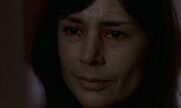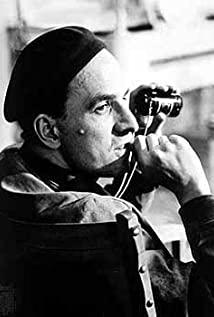Author/Simon
Written in the front: The importance of the spiritual desire for the human individual and the spiritual practice of the body is a controversial century-old dialectic. When Ertai et al. put forward the theory of "reproductive volition", the supremacy of the soul and the power of contempt for the flesh lead to "man" as a complete entity but lacking the integrity of self-recognition, losing patience with reality, and being unfamiliar with the distant past and the past. Fears arise in the future, and the group appearance revealed is indeed incomplete, and even loses its balance in the survival system.
As the first director in film history to be known as a film author, Ingmar Bergman, while rejoicing for "body intelligence", truly values the existence of "the moment" and the power of the flesh. Through the obscurity and clarity of the three female bodies, the contradiction between human "body and mind" and the lack of self "spirit" are filled with each other, and the film language and body posture are used to construct a unique spiritual code for women, bridging the gap between them. It reflects the incomplete group appearance before, and feeds back an accurate, delicate and clear value portrait for the humanistic spirit that European films have been missing for a long time.
Director: Ingmar Bergman Genre: Drama Country/Region of Production: Sweden Release Date: 1972-12-21 (Sweden) Duration: 91 minutes
01【Explain the moment of collective heartbreak of the characters】
The artistic value of "Shouting and Whispering" is that it is a supplement to the spiritual blank of European women after "World War II". The director searches for the lost soul for the female group who have suffered physical and mental suffering due to the war and the lack of value, and deconstructs the female body posture. From the similarities and differences to the discovery of the infinity of "physical potential", the metaphysical and inward God's picture is evoked by the existence of the flesh to awaken the God who was silent in suffering because he had nowhere to hide.
In the prologue, with the sound of the clock, the audience is gradually put into the stream of movies, and the close-up of the pendulum, sky, light and shadow, dolls and other close-ups directly hit the existence of time, and experience the beginning of the dream. The female image (Agnes) created by Bergman is placed in a large and dark red space. The characters fill the picture with weak breath, grim brows, and shriveled faces. Stranded in time, emerging in Agnes' desperate body, and in the category of barely leaving the close-up view, Bergman has completed a process about women's exposure to heartbreak.
As one of the three sisters in the family, Agnes is terminally ill and her pale life signs are close to death. She is the only woman who is extremely lacking in maternal love and ends in loneliness. The existence of sisters Karin and Maria both accelerated Agnes' spiritual death. The hypocritical faces of the two occupy Agnes's "bright" vision (I hope the sisters can cherish each other), but she is still the missing mother. In love, choose to pretend to firmly believe in the existence of the love of others.
They live collectively in a solemn and heavy ancient castle, in a closed and limited room, where their obscureness does not communicate with each other. Agnes traded her suffering body for sisterhood, but eventually revealed the fact that Vision was heartbroken because of her dead body. Surrounded by lies, Karin completely collapsed when she talked to Agnes' corpse. Maria was afraid of Agnes' soul, so she roared and madly in mutual intimacy. In the end, only the unrelated servant Anna rotted Agnes. The corpse embraces it, filling the void of its soul with the naked breasts of the Virgin.
In the final character assembly, the director deliberately hides the point of view of the speaker (Agnes). In the dialogue between man and God, Agnes symbolizes the omnipresent God/God, enveloping the torrent of reality and dreams. From the body at this time, the "situational space" of the body is created, and the meaning of "Dasein" is highlighted by the dialogue of the characters. When the silent God begins to speak, we find that the characters are not reverent in a pious manner, but full of fear. with horror.
The darkness devoured Karin's face little by little, and there was nowhere to escape to block the frightened Maria. Amid the constant whispers of the ambient sound, Karin, with the personal trauma of her unconscionable love with Maria, finally made her debut for the first time. It erupted in front of God, but it could only be exposed in the facial nerves, angering God's words and painful brows.
The three sisters' collective heartbreak/fleeing moment is exactly what Bergman was aiming for: "Through my life, I'm still expelling the effects of those upbringings on me." The judgment of the past is not a redemption for the soul. "Cry and Whisper" symbolizes the mirror image of the spiritual level due to the dramatic performance tension between the characters, bridges the suffering soul of the individual, and completes Bergman's expression of the matriarchal value of the lack of self.
02 [Deconstructing women's obscure body schema: Weakness and self-abuse]
In the gloomy and gloomy castle, the red with nowhere to escape is left blank inside the space, and the fate of the four women is deconstructed in the dream space of "the side of the soul" (deep in the soul) intended by red , When the ticking of the pendulum rang vertically in the ears of the characters, accompanied by Bach's low music, a deconstruction of the maternal line of Bergman's style was bridged by the beautiful female figure.
The director's construction of female identity is dominated by the weak Agnes, the painful Karin, the lustful Maria, and the childless maid Anna, who respectively undertake the responsibilities of "obscurity" and "purity". And Whispers" harassed the "obscure" Karin and Maria with ubiquitous whispers, like the whispered prayers of a guilty priest asking for God's forgiveness, and the "pure" Agnes and Anna always listened. I didn't see it, but I saw countless shouts on the two.
Agnes' body was pale and lost her consciousness of existence. At the end of her death, she fell into the predicament of memory under the lack of affirmation of mother's love, which made her unable to be self-sufficient and satisfied with the Dasein in front of her, so in countless ticks. In her voice, she wrote a line of sad words: "This morning is painful." Regarding this pain, Agnes's cry in her heart was not enough for her fragile body to execute, and keeping her weak became her ultimate mission.
Among the three sisters in the matrilineal construction of childhood, Maria was well-loved and thus acted as the purpose of maternal love, and Karin's incestuous love with Maria became a supply for "bridging" the victim's soul. Karin is the only woman who fully reveals her body. Desire and jealousy made Karin remove the layers of clothing, and a body with shriveled breasts and no vitality appeared in the picture. The sharp piece we noticed through Karin. Glass, feel this discolored flesh is extremely anticipating the warmth of blood, at this time the red blank symbolizes "the moist membranes in shades of red" (red, moist film), so a tragedy from the mutilated lower body begins. , smearing blood on her face, showing a look of pain and forgiveness, Karin's desire is satisfied by the pleasure of masochistic body.
The body-exposing presentation here also completes what Freud called "dream work": representationalization—turning abstract thoughts into figurative visions. Regarding Agnes' potential misfortune and Karin's extreme desires, the criticism of the past is completed through the unique body language of women. At this time, the body is no longer a life sign of "Dasein" but as a construct of time and desire. The bridge, for the first time, reveals the unshakable and inexpressible spiritual picture of the character's heart. Through the metaphor of the female body, Bergman once again affirms the artistry, expressiveness, and dreaminess of the film.
03【About Matrix·About God·About Bergman】
Regarding the deconstruction of the matriarchy, we can see through the flashbacks of the characters that Agnes cares deeply about her mother, but the maternal love she receives is far less than that of Maria, and the childhood process of the absence of maternal love also pours into Bergman's lack of regret:" Childhood experiences are like a magical vine that penetrates deeply into his every nerve." In order to pick up this morass of memory, the color charm of the film, the tension of actors' performances, and the potentiality of female body posture They all acted as the "existence of God", language was eclipsed in the perceptual field of limbs, and the deep sense of touch and vision between people became the philosophical blueprint in Bergman's memory.
In the missing blood relationship, Agnes, who was wrapped in suffering, is undoubtedly a tragedy. Bergman chose to place the responsibility of "god" on a weak and dying woman, constructing a god and suffering that contradict each other. , mutual replenishment complex. In the ancient castle, we gain insight into the power behind the body, and in the missing "primitive maternal concern", we see the spiritual shackles of women's lifelong distress. Among them, Maria's carnal madness was in contrast with the tightly wrapped Karin. The latent cry of female/maternal desire became Karin's instinct of abstinence to her husband, and her extreme "hatred" and "love" for Maria became spiritual. Terrible madness.
The weak Agnes and the mad Karin use their physical gestures to try to find their inner attachment and belonging in the empty reality, but in the ancient castle of "Cry and Whisper", the collective eclipsed signs of life are not enough to express The individual suffering caused by the vacant matrilineal value is Bergman's extreme desire for God, regret and forgiveness for the matrilineal value, and the camera chooses to erase Agnes' corpse/mortality again after her death. Awaken the silent God by the long hissing wailing of the many weak, lonely, and sorrowful sufferers.
Constructing a dialogue between language and body is Bergman's way of forgiving the past and bridging the suffering. When the sleeping individual has passed away, the time and suffering that have never been forgiven during the period will be exposed as "God". When the "dream work" performed by the film was completed, Bergman began to fill in the foundation of his own spirit and retouch the dream again. The "resurrection" Agnes became the final climax of the film. Although the will of the gods has passed through sinful people, Bergman chooses to forgive others and the matriarchal value of fault. Through the dialogue between people and gods, the faces of Karin and Maria are revealed, implying the washing of sin and the late motherhood. care.
In "The Shouting and Whispering", the disintegration of the matriarchal value caused the characters' never-ending redemption. Agnes, as a pure redemption body, endured the most unrequited, tragic, and lonely death, which we associate with "" The Passion of Christ", about the "representation of the body", because when the body posture becomes the language of philosophy, then the silent God will be replaced by manifest sickness, sorrow, weeping.
The servant Anna also completed the final "love" of the suffering Agnes in the classic form of the Virgin, awakening the silent God in the deep melody of Bach. Therefore, regarding Bergman's century-old "body redemption", we quote a passage from Xu Zhiwei, a professor of philosophy at Sun Yat-sen University, in "Introduction to Christian Theology": "The time to return to the body to experience God has come. ."
Simon's End: Bergman, who won the 46th Academy Award for "Cry and Whisper", uses beautiful film language to show his artistic expression, and through the collective performance of women, the individual spiritual differences caused by the lack of maternal concern, They bear the obscurity and brilliance of "coming from the miserable world" with their bodies, and use different depths of their body postures to present the real appearance that the individual lacks, so as to express their infatuation with the "unreachable dream pursuit". In "Cry and Whisper", we once again saw the artistic moment belonging to Bergman's "film master". He gave life to the will of the gods, with the power of "deepness", "loneliness" and "forgiveness". The skies over Europe have opened up a unique spiritual look that belongs to "post-war" women.
View more about Cries & Whispers reviews











